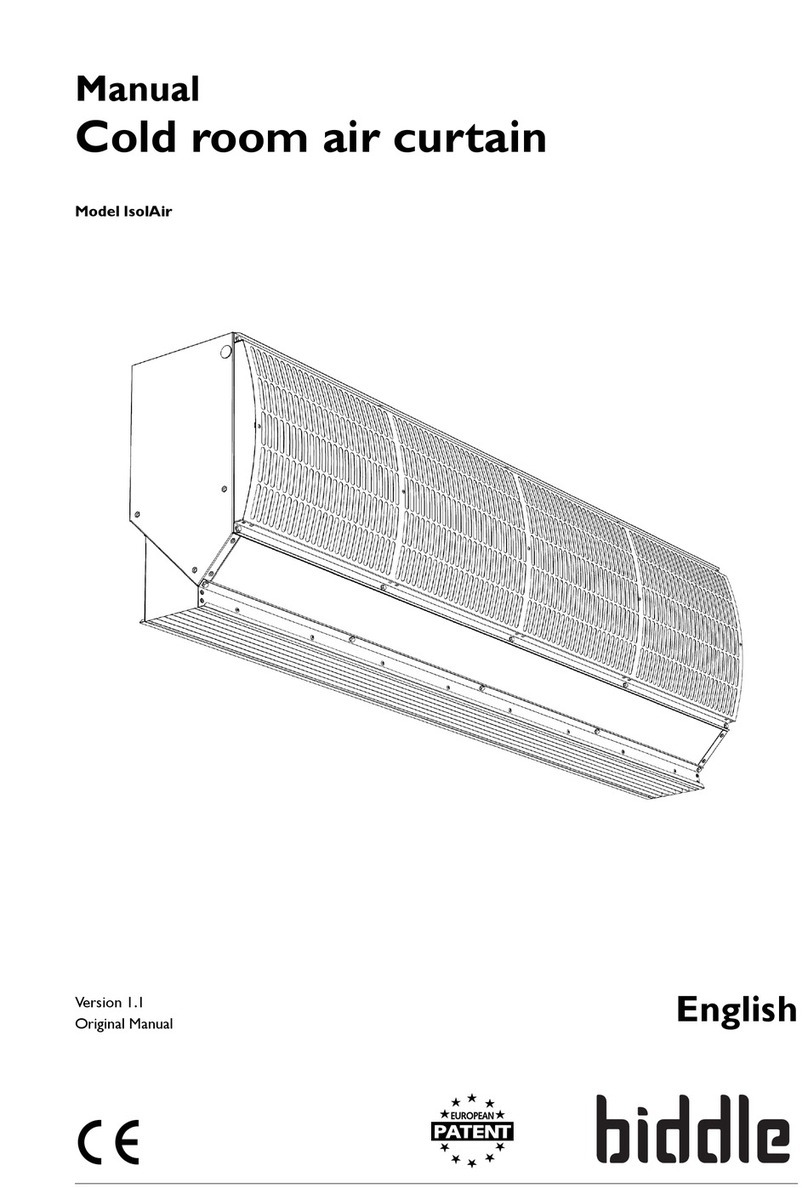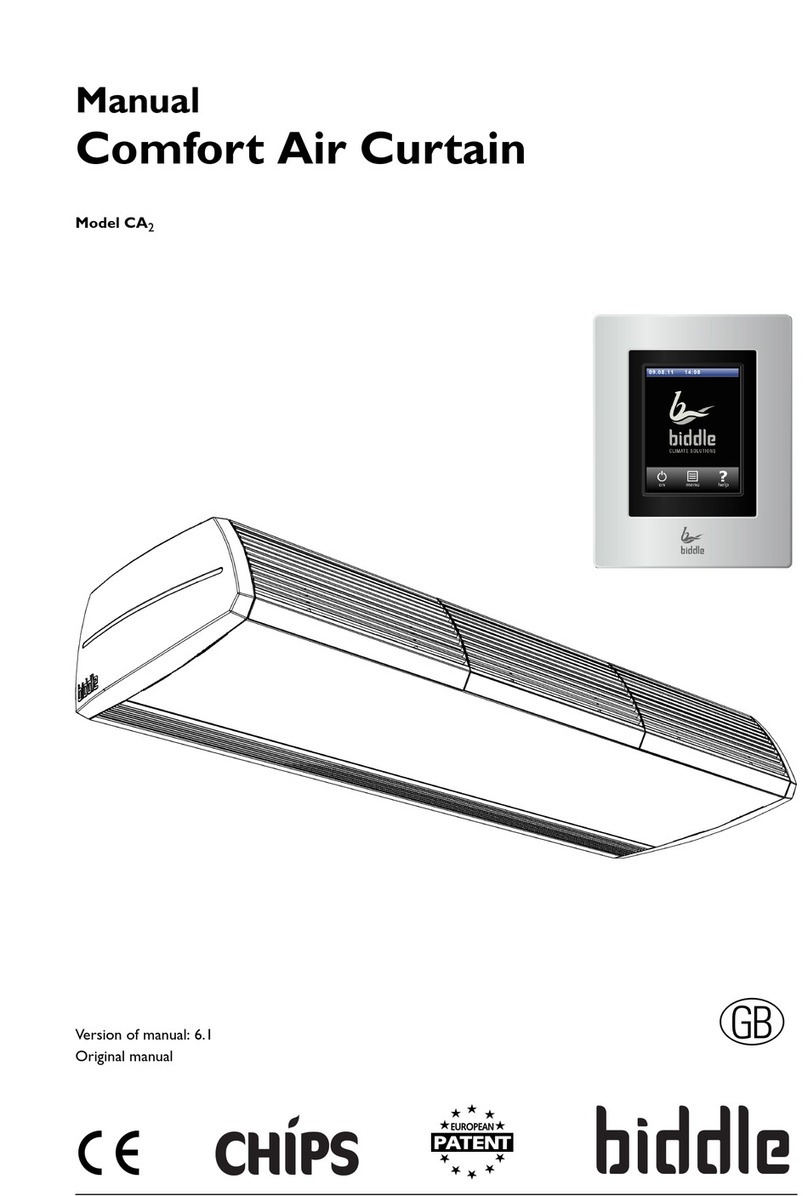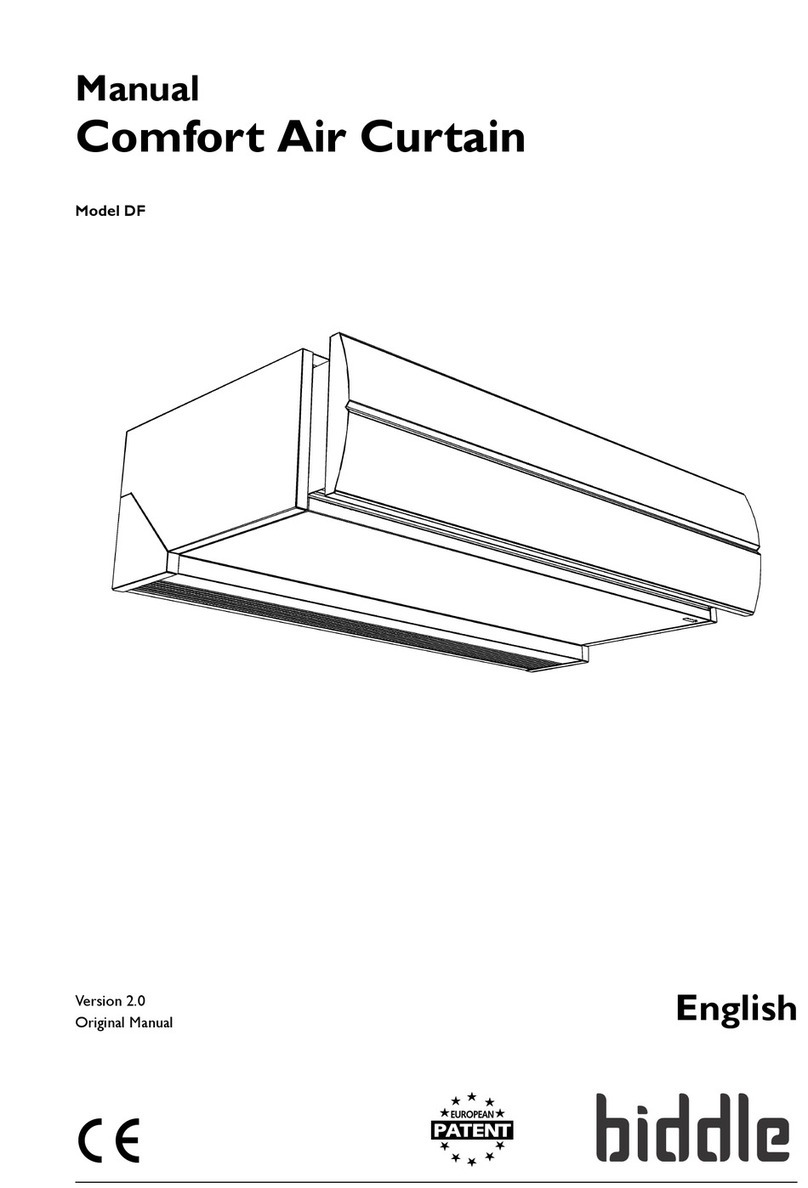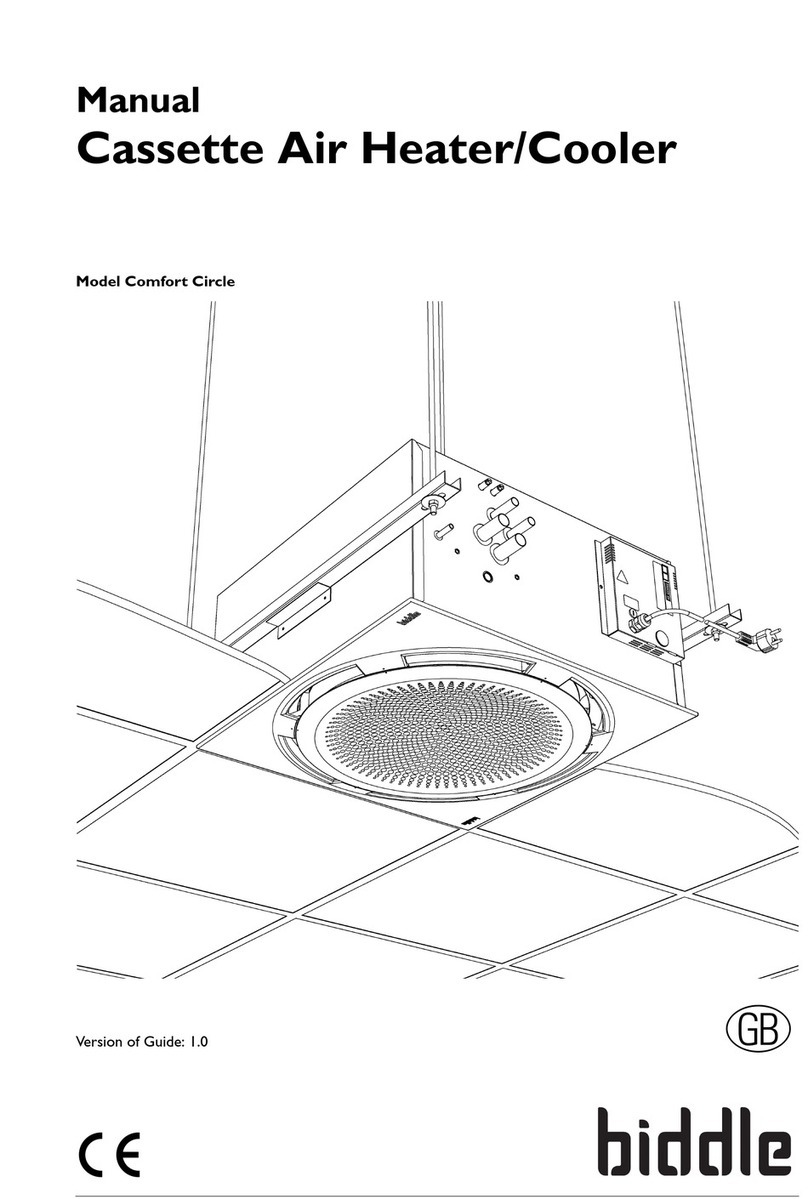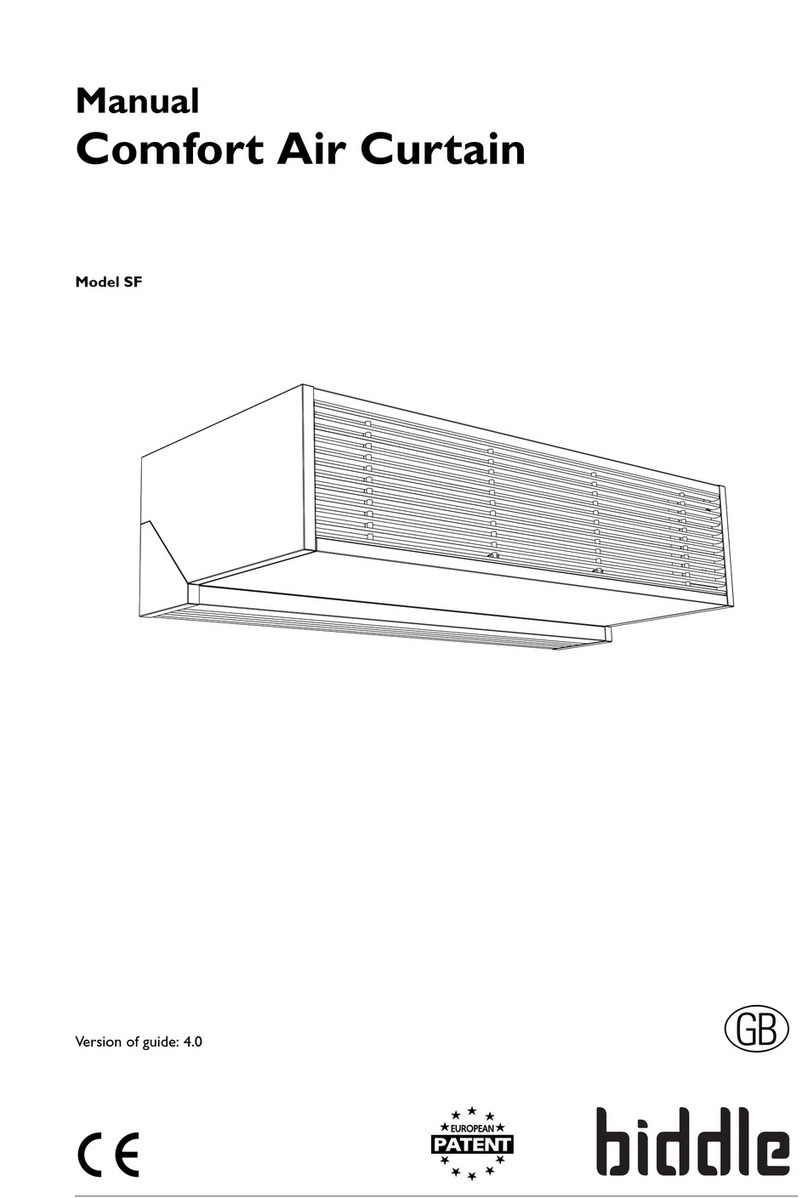
Industrial Air Curtain Contents
Version 2.1, English (27-10-2008) 3
Contents
1Introduction ........................4
1.1 About this manual ............................. 4
1.2 How to use this manual .................... 4
1.2.1 Marginal symbols in the manual ......... 4
1.2.2 Pictograms used on the unit and in
the manual................................................... 4
1.2.3 Related documentation....................... 4
1.3 About the unit.................................... 5
1.3.1 Applications ........................................ 5
1.3.2 Principle of operation.......................... 5
1.3.3 Type designation, unit......................... 5
1.3.4 Installation positions ........................... 6
1.3.5 Type plate ........................................... 6
1.4 Required parts .................................. 6
1.4.1 Supplied parts..................................... 6
1.4.2 Accessories ........................................ 7
1.4.3 Parts not supplied............................... 7
1.5 Safety instructions ............................ 7
1.5.1 Operation............................................ 7
1.5.2 Installation, maintenance and
service ......................................................... 7
2Installation..........................8
2.1 Safety instructions ............................ 8
2.2 Delivery check .................................. 8
2.3 General instructions.......................... 8
2.3.1 Order of working ................................. 8
2.3.2 Miscellaneous..................................... 8
2.4 Suspending units horizontally........... 8
2.4.1 Method of suspension......................... 8
2.4.2 Positioning .......................................... 9
2.4.3 Mounting the units .............................. 9
2.4.4 Adjusting and securing ..................... 10
2.5 Installing units vertically .................. 10
2.5.1 Method of installation........................ 10
2.5.2 Positioning ........................................ 10
2.5.3 Installing the units ..............................11
2.5.4 Securing ........................................... 12
2.6 Connecting units to the CH system 12
2.6.1 General............................................. 12
2.6.2 Connecting water pipes .................... 13
2.7 Connecting the fans........................ 13
2.7.1 General............................................. 13
2.7.2 Making connections within the units . 13
2.8 Connecting the electric heating ...... 14
2.8.1 General............................................. 14
2.8.2 Opening the heating section............. 15
2.8.3 Connecting the feeder cable............. 15
2.8.4 Connecting the control cable within
the units ..................................................... 15
2.9 Finishing ......................................... 16
2.10 Switching on and checking
operation............................................... 16
3Maintenance ....................18
3.1 Safety instructions .......................... 18
3.2 Access ............................................ 18
3.2.1 Fans.................................................. 18
3.2.2 Heating element ............................... 19
3.3 Cleaning.......................................... 19
3.4 Scheduled maintenance ................. 19
3.4.1 Monthly maintenance ....................... 19
3.4.2 Annual maintenance ......................... 20
4Solving problems .............21
4.1.1 General............................................. 21
4.1.2 Unit does not discharge any air ........ 21
4.1.3 Unit discharges little air..................... 21
4.1.4 Unit does not heat, or too little.......... 21












